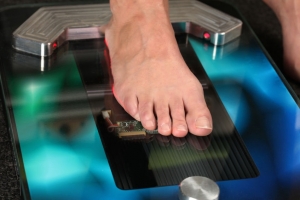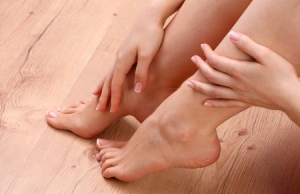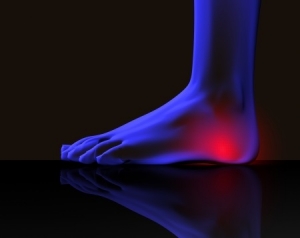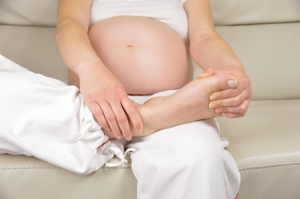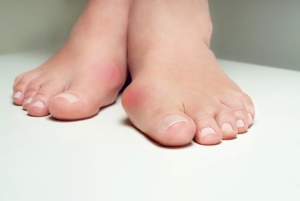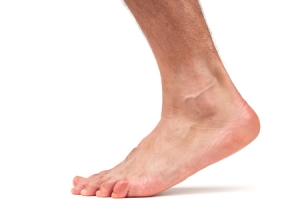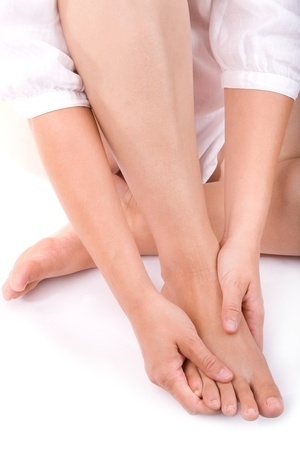Connect With Us
Blogs
Displaying items by tag: Flat Feet
FAQ’s about Custom Orthotics
At Superior Foot & Ankle Care Center we often get questions from our Los Angeles County patients about custom orthotics. Below are some of the most frequently asked questions about this very effective, non-invasive type of podiatric treatment.
Q: What conditions can orthotics help treat?
A: Orthotics are footwear inserts that are used to provide support and reduce pain, discomfort, pressure or imbalance, and other symptoms caused by a wide range of foot and ankle deformities, injuries, and diseases as well as biomechanical problems. Some common conditions that can be treated with orthotics include flat feet, heel pain, arthritis, bunions, calluses, corns, big toe pain, and neuropathic ulcerations.
Q: What’s the difference between over-the-counter shoe inserts and custom orthotics?
A: Over-the-counter inserts can provide some arch support and treat minor discomfort and pain. Prescription orthotics, however, are made from a mold of your unique foot and therefore better able to address and correct your specific foot issues. Prescription orthotics are also constructed of more durable materials and can last a long time.
Q: What are some common kinds of prescription orthotics?
A: Orthotics come in many shapes and sizes and are made from a variety of materials depending on individual needs. They may take the form of insoles, arch supports, heel pads, or foot cushions. Generally, there are two classifications of orthotics. Accommodative orthotics offer cushioning and reduce pressure on a vulnerable area of the foot. Functional orthotics are used to treat foot problems caused by foot and ankle motion and alignment.
Q: How are custom orthotics made?
A: The first step is to have our podiatrists, Dr. Victoria M. Foley and Dr. Constance Ornelas, conduct a thorough examination of your feet and ankles and evaluate how they are impacting your knees, legs, and lower back. Once the foot doctor has a diagnosis of your podiatric disorder and a complete understanding of the biomechanics of your foot, a mold of your foot will be made from a plaster cast or a specialized computer scan that maps your foot structure and your gait. The podiatrist will then check to make sure the orthotic is fitted properly and monitor your progress.
If you would like to learn more about orthotics and whether or not they can help you, contact our Long Beach office at (562) 420-9800 office for an appointment today.
Foot Problems Caused by Staying at Home
At Superior Foot & Ankle Care we’ve seen an increase in foot pain among our Los Angeles County patients in recent months. For many, this is the result of the shutdown due to the pandemic. Many people have had their normal fitness routine interrupted. In addition, a simple at-home habit has had a surprising consequence. Going barefoot or wearing slippers or flip-flops around the house may be normal after work—but what about when you don’t leave the house to go to work? The increased amount of time in this type of footwear leads to several common conditions including:
- Flat feet
- Heel pain and plantar fasciitis
- Arch pain
Re-Entering an Active Lifestyle
As you begin to get back to your normal routine there are some steps you can take to help ease the transition and reduce foot discomfort.
- Wear good quality, supportive shoes, even when home. The trouble with going barefoot is that the arch of the foot is not supported. As your arch flattens, it puts strain on the plantar fascia (the long band of tissue that stretches across the bottom of your foot). This can cause both arch and heel pain. A cushioned insole is also helpful in preventing podiatric pain.
- Change positions frequently. Working from home means you’re not even walking to the car or going out at lunch. Be sure to get up at least once an hour if you’re sitting at a desk or try standing to work if you can find a counter that is the correct height. Stretch and rotate your feet and wiggle your toes throughout the day to stay flexible and keep up good circulation.
- Gradually increase activity. While it may be tempting to jump into an exercise program at full speed, it’s better to start slowly. You’re more prone to injuries if you try to push your body too far too fast after a period of being inactive. Walking is a great way to re-enter a more active lifestyle. Try fitting in a walk during lunch or at the end of the workday.
If you’re experiencing foot pain that you can’t explain or you start to have uncomfortable symptoms in your feet or ankles as you become more active, contact our Long Beach office at (562) 420-9800 and schedule an appointment with our podiatrists, Dr. Victoria M. Foley and Dr. Constance Ornelas.
3 Common Causes of Heel Pain
One of the most frequent reasons that patients come to see us at Superior Foot & Ankle Care Center is heel pain. There are multiple causes of heel pain, however, and for that reason it’s important that if your heel is hurting, you have one of our podiatrists, Dr. Victoria M. Foley or Dr. Constance Ornelas examine your feet and determine the source of your discomfort. Once the foot doctor has diagnosed the condition that is causing your pain, the proper treatment plan can be decided upon.
Below are three common reasons heels hurt:
- Plantar Fasciitis—along the bottom of your foot there is a long band of tissue known as the plantar fascia that connects the heel bone to the ball of the foot. The plantar fascia is subject to large amounts of pressure and impact from normal daily activities. If you are a runner or serious athlete, your plantar fascia is getting an additional workout. When the plantar fascia becomes inflamed, it can cause heel pain. One telltale sign that plantar fasciitis is the cause of your heel discomfort is pain that is worse first thing in the morning. You may also experience pain in the arch of your foot and swelling on the bottom of your heel.
- Heel Spurs—spurs are outgrowths of bone. Heel spurs are often associated with, but are different from plantar fasciitis. When calcium deposits form in the heel, bone spurs can develop. Pressure from footwear and walking can cause redness, swelling, and painful inflammation. If you have heel spurs you may experience sharp pain or a dull ache.
- Flat Feet—although flat feet can also have several causes, the bottom line is that if your arch is collapsing, heel pain can result from it. Flattening of the arch puts your foot in a biomechanically abnormal position, which exerts excess pressure on the heel. This is why shoes that lack arch support can also be a heel pain trigger.
Depending on the source of your heel pain, there are many conservative treatments including: losing weight, custom orthotic and stretching exercises. Make an appointment at our Long Beach office in Douglas Park CA to find out why your heel is hurting.
Avoid Foot Problems During Pregnancy
Are you pregnant? Congratulations! At Superior Foot & Ankle Care Center, we know how excited you must be. We also want to do our part to help ensure that your pregnancy proceeds as comfortably as possible. Hormonal changes and weight gain that occur naturally during pregnancy can play havoc on the health of your feet. Below are some common problems pregnant women encounter and what to do about them.
Arch and Heel Pain—these are perhaps the most common complaints pregnant women have about their feet. As your pregnancy progresses, the added weight can have the effect of flattening your arch, resulting in symptoms similar to those of patients with flat feet. Pain in the arch and heel pain due to the strain put on the plantar fascia (the long band of tissue that runs along the bottom of your foot) are not uncommon. To combat this type of discomfort, look for shoes with extra arch support. In some cases, our podiatrists, Dr. Victoria M. Foley or Dr. Constance Ornelas will fit you with a custom orthotic device to wear in your shoes.
Ingrown toenails—hormones released by your body toward the end of your pregnancy to help relax ligaments to make birth easier can affect your feet by causing them to spread. Your shoes may start to feel too tight. When toes are pressed up against each other for long periods of time, ingrown toenails can develop. It may be necessary to buy shoes that are a larger size or wider width for the last trimester.
Swelling—excess fluid in your body, and the position of the baby may result in swollen feet and ankles. This can lead to discomfort and pain. The best way to reduce swelling is by putting your feet up frequently. Stretching, not crossing your legs when sitting and drinking lots of water will help too.
If your feet are giving you trouble during your pregnancy, make an appointment at our Long Beach office in Douglas Park CA by calling: (562) 420-9800. Our podiatrists will help get to the source of your discomfort and prescribe a safe and effective treatment.
What’s Behind Bunions?
At first, a bunion may appear very subtle. You may look down and notice your big toe seems to be leaning slightly toward the second toe. At Superior Foot & Ankle Care Center, we find many patients are unfamiliar with how bunions develop and therefore may not come in promptly to get them evaluated.
Know Your Risk Factors
Most often, bunions are caused by a biomechanical defect in your feet. This may be a neuromuscular problem, flat feet or overpronation. In many instances, this fault in the mechanics of your feet may be inherited. There are other factors, however, that can also increase your risk of developing a bunion, including:
- Wearing tight-fitting shoes with pointy or narrow toe boxes
- Spending long periods of time in high-heeled shoes or boots
- A previous foot injury
- Congenital defect
- Repetitive stress to the foot
- Arthritis
Seek Treatment Early
In its early stages, a bunion may not cause you any pain or discomfort. However, bunions are a progressive disorder. As time goes on, the big toe joint will move further and further out of place until it begins to cause pain when you walk. It will also become increasingly difficult to wear shoes due to the pressure exerted on the bunion by your footwear. The toe can eventually become rigid in the defective position and cause other deformities such as hammertoes to occur. It’s essential that you make an appointment at our Long Beach office so that our podiatrists, Dr. Victoria M. Foley or Dr. Constance Ornelas can examine your foot. Fortunately, there are many treatment options available which can slow the progression of the bunion and prevent foot pain and discomfort. These include:
- Altering your activities to avoid motion that exerts adverse pressure on the bunion
- Using a custom orthotic to correct the biomechanical problem and increase stability
- Exercises to increase joint mobility
- Night splints to realign the joint
If you think you have a bunion forming, don’t wait. Contact us today for an appointment by calling: (562) 420-9800.
Fixing Flat Feet
At Superior Foot & Ankle Care Center we treat many patients with flat feet. This common condition can be a source of ongoing pain and also cause swelling and a lack of flexibility in the foot. Oftentimes, people with flat feet also suffer from heel pain due to the biomechanical dysfunction that alters the structure and motion of the foot.
In some people, flattening of the arch begins during adolescence and continues into adulthood. For others, it is caused by Posterior Tibial Tendon Dysfunction or PTTD—a condition that has to do with changes in this tendon that provides major support for the arch of your foot. Other contributing factors to flat feet include:
- Genetics
- Weight gain
- Injury or trauma
- Aging
- Arthritis
Getting Relief
Our podiatrists, Dr. Victoria M. Foley or Dr. Constance Ornelas will want to examine your feet and determine the source of the your deformity. If your fallen arches are not causing you pain, the foot doctor may just take a wait and see approach and monitor your condition. Flat feet is usually a progressive disorder and therefore is best treated sooner rather than later. Regardless of the cause, however, there are several non-invasive treatment options available. These include:
- Icing the painful area
- Anti-inflammatory medications
- Physical therapy
- Arch supports, braces or supportive tape
- Custom orthotics
- Rest
- Choosing more supportive shoes
When these measures fail to bring relief or the arch continues to fall, surgery may become necessary. We offer flat foot reconstruction surgery that can provide a long-term correction of your fallen arches. If you are suffering with painful flat feet, contact our Long Beach office as soon as possible by calling: (562) 420-9800. The podiatrist will discuss the best surgical option for your specific case of flat feet and let you know what you can expect as far as results and recovery time.
5 Tips for Overworked Feet
Do you have an occupation that requires you to be on your feet for long hours at a time? At Superior Foot & Ankle Care Center we find that nurses, teachers, construction workers and other patients with jobs that have them upright and mobile for most of the day are more likely to have foot pain and swelling and are also at a higher risk for developing podiatric disorders. Although we can’t change your job, we can offer suggestions for ways to minimize foot pain and increase your comfort level.
Get Problems Checked Out Promptly
- The majority of foot problems, such as plantar fasciitis, sesamoiditis, flat feet and metatarsalgia, are made worse by being on your feet for extended periods of time. For this reason, if your work requires this, it’s particularly important to not put off getting foot problems evaluated. Our podiatrists, Dr. Victoria Foley and Dr. Constance Ornelas will examine your feet to determine the cause of your symptoms and recommend the best treatment. The foot doctor may be able to suggest padding or an orthotic device for your shoes to help relieve foot pain. Be sure to let the podiatrist know that you have a job that requires you to spend long hours on your feet.
Choose Shoes Wisely
- Your shoe choice is critical for comfort and protection. Choose styles with good ankle and arch support and a cushioned insole. It’s a good idea to alternate your shoes as well for maximum comfort and to avoid excess pressure to one particular spot on your foot.
Stay Hydrated
- Although it may seem backwards, drinking plenty of water is one of the best ways to prevent painful edema or swelling of your feet and ankles.
Make the Most of Break Time
- When you do get a break, get off your feet for as long as you can and elevate them if possible. Do some stretching exercises and flex your feet and toes. Once your break is over, try to change your position frequently. If you are unable to sit down, at least shift your weight from foot to foot.
Compensate During Non-Work Hours
- Be sure to put your feet up when you get home from work. Choose exercise and fitness activities that don’t put additional strain on your feet. Swimming, biking and rowing are examples of physical activities that don’t put more pressure on your feet. Be sure to soak your feet if they are sore and treat yourself to a foot massage now and then to relieve pain and stiff muscles.
If you have additional concerns about your feet and your occupation, contact our Long Beach office by calling: (562) 420-9800.
Good Eats to Help Your Feet
In March, we celebrate National Nutrition Month. At Superior Foot & Ankle Care Center we believe that good nutrition has many positive benefits for your podiatric health. What’s the connection between what you eat and your feet? Read on.
Maintain a Healthy Weight—one of the most obvious benefits to eating healthy is getting to and then maintaining a healthy weight. Being overweight increases the risk and severity of many foot health problems, including:
- Arthritis
- Plantar fasciitis
- Flat feet
- Sesamoiditis
Many patients may not realize when it comes to your lower extremities, the pressure of excess pounds can be dramatic. For example, every pound you gain or lose exacts 4 times the amount of pressure on your knees.
Stay Active—in addition to the fact that it’s easier to be active when you’re not overweight, the foods you eat can also impact your energy level. Avoiding processed foods and those high in saturated and trans fats and sugars and focusing on lean protein and complex carbohydrates can increase your energy level and help you be more active.
Get the Nutrients You Need—good nutrition is about eating a varied diet. Enjoying a rainbow of produce, both fruits and vegetables will ensure that your body gets all of the many nutrients it needs. Certain fruits and vegetables like blueberries and red peppers can help fight inflammation, a common source of pain in podiatric disorders. Making choices that ensure you get the calcium you need from dairy products, leafy greens, and certain fishes will build strong bones—something that’s important to your feet since over a quarter of all the bones in your body can be found there.
Avoid Diseases that Harm Your Feet—your diet can lower your risk for certain diseases like diabetes, heart disease, and high blood pressure. Each of these conditions causes problems that can harm your feet such as poor circulation and neuropathy.
If you have questions about ways that your diet can improve the health of your feet, contact our Long Beach office by calling: (562) 420-9800. Our podiatrists, Dr. Victoria Foley, and Dr. Constance Ornelas. We want to help our patients be proactive about their health and take the necessary steps to lead active lives.
Resolve to Get in Shape—Safely
Is starting a new fitness plan one of your New Year’s resolutions? At Superior Foot & Ankle Care Center we applaud this initiative, but also add a word of caution. We see too many patients who fail to take the necessary steps to ensure that their new fitness plan is safe. Prevent injuries and get your healthy resolution off to a smart start by taking into consideration the following.
Your Current Condition—do you suffer from any chronic foot or ankle disorders such as flat feet, plantar fasciitis or hammertoes? Our podiatrists, Dr. Victoria Foley or Dr. Constance Ornelas, can help you determine the best type of exercise and footwear to accommodate an existing podiatric condition. In some cases, special padding or even a custom orthotic device may be prescribed to make exercise more comfortable.
Long-term Goals—in order to determine the type of exercise to do, you need to know what your goals are. Do you want to lose weight? Have more strength and endurance? Improve flexibility and balance? Your general physician and exercise professionals can help match your goals to fitness activities and sports that will best achieve them.
Gear—in our opinion, your footwear is the most important piece of equipment for a new fitness program. Be sure that you get the right shoes for your sport and that they fit properly. If the foot doctor has recommended an orthotic, be sure it fits in your sports shoes. Look for socks that are not too bulky and ones that wick moisture away from your skin to prevent athlete’s foot and fungal infections.
Now you’re ready to begin. Start slow and gradually increase the degree of difficulty of your work out. If your feet or ankles hurt from your new exercise plan, contact our Long Beach office for an appointment by calling: (562) 420-9800.
Do’s and Don’ts for Reducing Risk of Childhood Obesity
At Superior Foot & Ankle Care Center we treat many conditions that are made worse by the patient being overweight. The risk and severity of arthritis in the feet and ankles, metatarsalgia and flat feet, for example, are all increased by obesity. In addition, being obese increases the risk for diseases like diabetes and hypertension, which also have serious health consequences for your feet. September is National Childhood Obesity Awareness Month. Studies have shown that obese children tend to continue to be obese as adults. For that reason, it’s important to foster healthy lifestyle habits during childhood. Below are some do’s and don’ts to help your child maintain a healthy weight:
Do: strive to have your child spend at least 60 minutes a day being physically active. Encourage them to participate in a wide variety of activities to be sure they get exercise that is aerobic, muscle and bone strengthening. Not all activities have to be organized. Just playing in the yard children are likely to run, jump and climb which will give them all the types of exercise they need.
Don’t: force your child to be active if they complain of foot or ankle pain. If you suspect a podiatric problem is sidelining your child from being physically active, contact our Long Beach office (562-420-9800) for an appointment. Our podiatrists, Dr. Victoria Foley and Dr. Constance Omelas will examine your child’s feet to determine if there is an injury or other disorder that is causing them pain.
Don’t: allow unlimited amounts of time spent in front of a screen. If your child has full-time access to cell phone, television, computer and video games they are less likely to engage in physical activities.
Do: make changes in your family’s eating habits. Increase the number of fruits and vegetables in your menus, replace sugary drinks with water and have healthy snacks readily available. Involve your children in menu planning and grocery shopping and teach them how to make good food choices.
Do: set a regular bedtime for your child or teen that allows them to get enough sleep. Depending on your child’s age, they may need between 8 and 12 hours of sleep per night. Studies show that lack of sleep increases the risk of obesity.
Approximately 1 in 5 children today are obese. Working together, families and communities can help greatly reduce this number with lifestyle choices that will make for healthier children and, ultimately, healthier adults.
